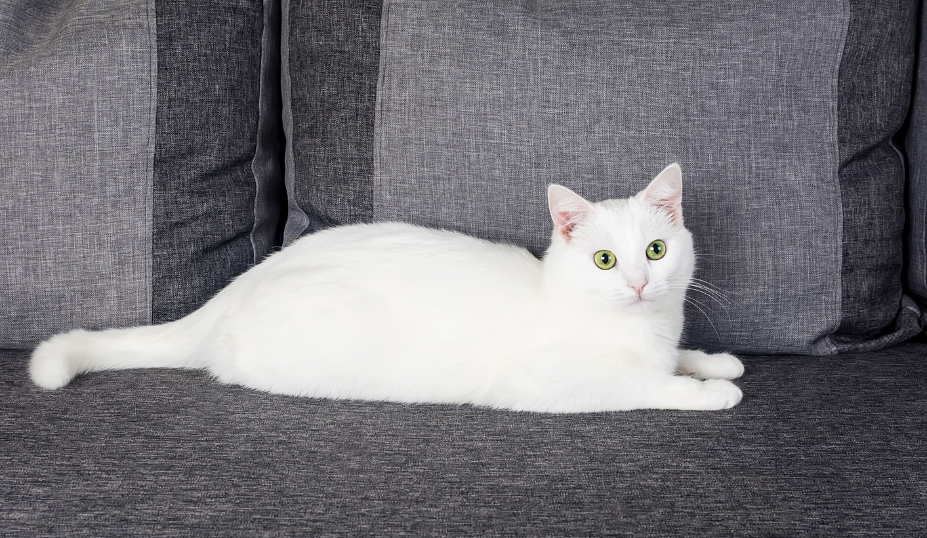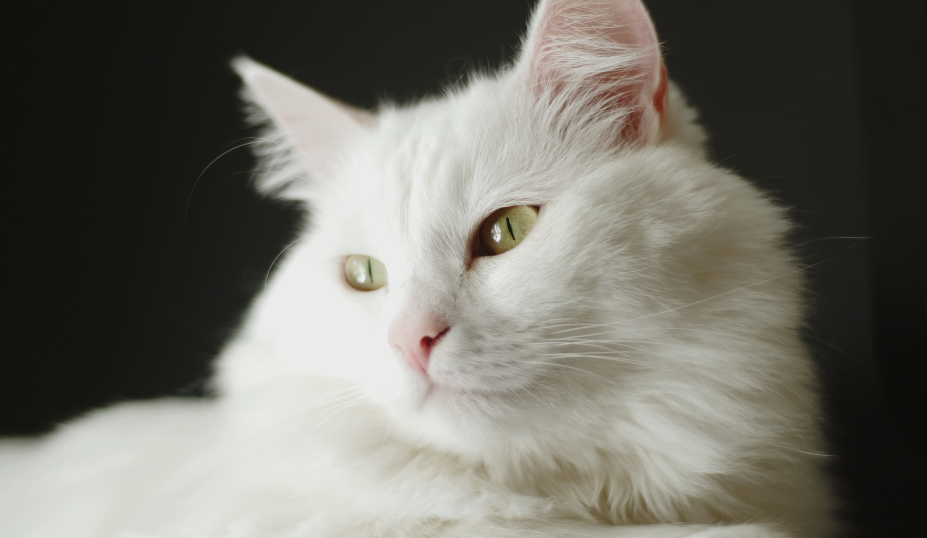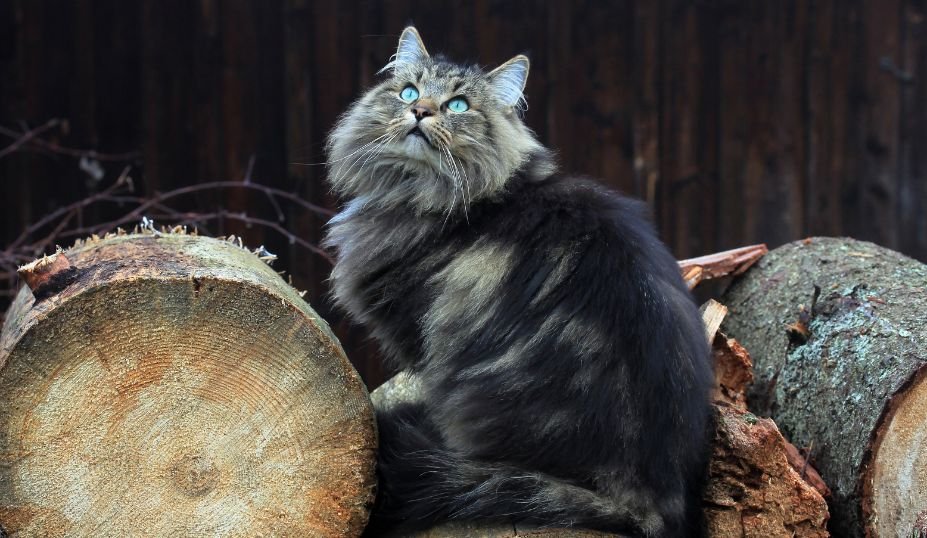Turkish Angora vs Norwegian Forest Cat: A Comprehensive Comparison
Turkish Angora vs Norwegian Forest Cat: A Comprehensive Comparison
Dive into the fascinating world of feline breeds as we explore the unique characteristics, histories, and personalities of the Turkish Angora vs Norwegian Forest Cat. These two breeds, each with their own distinct charm, have captivated cat enthusiasts worldwide. The Turkish Angora, known for its medium size, long slender body, and fine boning, is a playful and affectionate breed that originated from Turkey.
This breed, often referred to as a ballerina for its grace and agility, is known for its intelligence and strong bonds with their human companions. On the other hand, the Norwegian Forest Cat, a large, heavily boned breed, is a friendly and calm companion that hails from the forests of Norway.
This breed, affectionately known as "Wegie", is known for its adaptability to different families and lifestyles, and its strong, powerful body that hints at its past as a hunter. Join us as we delve deeper into the captivating world of these two remarkable cat breeds, exploring their unique traits, grooming needs, and the joy they bring to their human families.
Breed History
The Turkish Angora is an ancient, natural breed that originated in central Anatolia, specifically in the Ankara Province of modern-day Turkey. This elegant and graceful cat has been documented as early as the 17th century and is known for its slender body, fine boning, and long, silky coat.
On the other hand, the Norwegian Forest Cat is a breed that hails from the forests of Norway. This large, heavily boned cat is adapted to cold climates and has a dense, water-repellent coat. The breed is believed to have been brought to Norway by the Vikings around 1000 A.D. and has been a popular companion in Norway and Sweden for centuries.
Physical Appearance

When comparing the size and weight of Turkish Angora and Norwegian Forest Cats, the Turkish Angora is a medium-sized breed, weighing between 5-10 pounds, while the Norwegian Forest Cat is a larger breed, with males weighing around 12 to 20 pounds and females between 8-13 pounds. In terms of coat and color differences, the Turkish Angora has a long, silky coat without an undercoat, and it can come in various colors and patterns.
The Norwegian Forest Cat, on the other hand, has a long, dense coat with a woolly undercoat and a water-repellent upper coat, and it can also come in a variety of colors and patterns.
Personality and Temperament
Turkish Angoras are known for their affectionate, friendly, and sociable personalities. They are highly intelligent, curious, and enjoy being involved in their owner's daily activities. These cats form strong bonds with their human companions and can become very protective of them. They are playful and energetic, appreciating a variety of toys and activities to keep them engaged.
On the other hand, Norwegian Forest Cats are gentle, friendly, and calm. They are intelligent and fairly affectionate, often forming strong bonds with their owners once trust is established. These cats are adaptable and inquisitive, making them suitable for various family environments.
They are also known for their hunting instincts and enjoy playing games that stimulate their natural abilities.
Trainability and Intelligence
The Turkish Angora and the Norwegian Forest Cat are two distinct breeds, each with their own unique traits and characteristics. Both breeds are known for their intelligence and trainability, making them wonderful companions for those who appreciate an engaging and interactive pet.
The Turkish Angora is a breed that is known for its high energy, intelligence, and affectionate nature. They are always eager to be part of the action and will play with anything to get their owner's attention.
They are exceptionally intelligent and athletic, and they welcome challenges. They are curious and thrive on learning commands and tricks. This breed is also known for its loyalty and affection, and they love to play and run.
Turkish Angoras are renowned for their loyalty and affectionate nature. They are playful, intelligent, and athletic, often forming a strong bond with a specific member of a family. This chosen companion receives their unwavering protection. Turkish Angoras are not only involved but also display remarkable intelligence, showcasing basic problem-solving skills in various situations.
Moving on to the Norwegian Forest Cat, affectionately known as 'Wegie,' this breed is characterized as friendly, calm, and gentle. With their large size, semi-long, dense coats, and muscular frame, Norwegian Forest Cats are natural hunters that exhibit both speed and agility. Despite their initial reserved nature, they are adaptable to different families and lifestyles.
Norwegian Forest Cats require mental stimulation to prevent laziness, especially since they have strong hunting instincts. They take some time to build trust and form bonds with their owners, but once established, they prove to be loyal and affectionate companions. The clever nature of the Wegie makes them fairly trainable, easily picking up on basics such as using the litter box.
Exercise Needs
Turkish Angoras and Norwegian Forest Cats are both intelligent and active breeds that require regular exercise to maintain their health and happiness.
Turkish Angora

Turkish Angoras are known for their high energy levels and playful nature. They enjoy running, jumping, and playing games that involve chasing and catching objects. They also appreciate climbing and need plenty of opportunities to climb high places.
Without enough physical and mental stimulation, Turkish Angoras can become bored and destructive.
Norwegian Forest Cat
The Norwegian Forest Cat is recognized for its robust, agile frame and natural hunting instincts. While remaining lively and playful well into adulthood, they are not obsessively active. These cats appreciate engaging toys and are generally willing to participate in play sessions, albeit on their own terms. Owners are encouraged to provide a cat tree or tower to satisfy the breed's inclination for climbing, perching, and scratching.
Grooming Requirements
The Turkish Angora and the Norwegian Forest Cat are two distinct breeds with unique grooming needs.
Turkish Angora Grooming
Turkish Angoras are known for their long, silky coats, which are relatively low maintenance due to their single layer of fur. This breed doesn't have an undercoat, which reduces the amount of shedding, tangling, and matting, and eliminates the need for excessive brushing.
However, regular grooming is still necessary to keep their coats healthy and shiny.Hereare some tips for grooming a Turkish Angora:
- Brushing: Brushing the Angora once a day is ideal, but you should aim for a minimum of once or twice a week. Use a slicker brush or a fine-toothed comb, both of which work well on felines with medium to long fur.
- Dealing with Mats: While Turkish Angoras don't get mats easily, if there are any tangles, try to work them out to avoid hurting your cat.
- Starting Early: If you've adopted a Turkish Angora kitten, start the grooming process early. This will help your cat get familiar with the process.
- Check for Oily Fur: Some Turkish Angoras may have oily and scraggly fur, especially on the belly. Regular brushing can help manage this.
Norwegian Forest Cat Grooming
Norwegian Forest Cats, on the other hand, have a double coat of fur made to protect them from harsh northern weather. This breed requires more frequent grooming to prevent their long hair from getting tangled.
Here are some tips for grooming a Norwegian Forest Cat:
- Brushing: Brushing your Norwegian Forest Cat once a week is usually sufficient to keep their fur detangled and fabulous-looking. A wire bristle brush is recommended for this breed.
- Dealing with Mats: Norwegian Forest Cats can get matted due to their double coat. Regular brushing can help prevent this.
- Sanitary Trim: Some owners opt for a sanitary trim around the cat's rear to prevent messes. This should be done by a professional groomer.
- Use the Right Brush: A wire bristle brush or a metal comb is recommended for Norwegian Forest Cats.
Health Issues

Turkish Angoras and Norwegian Forest Cats, like all breeds, have certain health issues that are more common among them.Turkish Angoras are generally a healthy breed, but they can be prone to a few health issues. These include:
Hypertrophic cardiomyopathy, a type of heart disease characterized by the enlargement of the heart muscle.
- Ataxia, a fatal neuromuscular disorder that affects kittens aged two to four weeks.
- Deafness, particularly in white-coated Turkish Angoras with blue eyes.
- Norwegian Forest Cats, while resilient and overall healthy, are also susceptible to a few hereditary diseases:Hypertrophic cardiomyopathy, the most common form of heart disease in cats.
- Hip dysplasia, a problem where the hip joint is malformed, leading to arthritis or painful joint inflammation.
- Glycogen storage disease type IV (GSD IV), an inherited health condition that causes glucose metabolism abnormalities.
Both breeds are also prone to bacterial and viral infections such as panleukopenia, calicivirus, rhinotracheitis, and rabies.
Regular veterinary check-ups can help catch these conditions early and ensure the healthiest life for your cat.
Cost per Kitten
When considering adding a Turkish Angora or Norwegian Forest Cat to your family, it's essential to factor in the cost of purchasing a kitten from a reputable breeder. Prices can differ depending on factors like the breeder's location, the kitten's pedigree, and the demand for the breed.
Turkish Angora Kitten Price
The price range for a Turkish Angora kitten can differ widely, with prices usually ranging from $600 to $1,200. However, some kittens with exceptional pedigrees or show-quality traits may cost even more. It's important to research breeders carefully and ensure they follow ethical breeding practices and prioritize the health and well-being of their cats.
Norwegian Forest Cat Kitten Price
The cost of a Norwegian Forest Cat kitten can also vary, with prices generally ranging from $800 to $1,500. As with Turkish Angoras, factors such as pedigree, show quality, and breeder reputation can influence the price. Always choose a trustworthy breeder who prioritizes the health and welfare of their cats.
Turkish Angora vs Norwegian Forest Cat: Comparison Table
Here is a comparison table summarizing the main differences and similarities between the Turkish Angora and Norwegian Forest Cat:
|
Feature |
Turkish Angora |
Norwegian Forest Cat |
|
Origin |
Turkey
|
Norway |
|
Size |
Medium |
Large |
|
Weight |
Male: 8-12 pounds, Female: 6-9 pounds |
Male: 12-16 pounds, Female: 9-12 pounds |
|
Coat |
Long, soft, and silky |
Long, glossy top layer with a woolly undercoat |
|
Colors |
Variety including white, red, cream, black, blue, silver, tortoiseshell, calico, dilute calico, bluecream
|
Variety including white, black, blue, red, cream, silver, golden, red, cameo, tortoiseshell, bluecream, brown
|
|
Temperament |
Playful, intelligent, athletic, and involved. They bond with humans, often selecting a particular member of a family to be their constant companion
|
Sweet, easy going, sociable, but also enjoy their alone time
|
|
Energy Level |
Very high
|
Average
|
|
Lifespan |
9-14 years
|
8-14 years
|
|
Maintenance |
Moderate
|
High
|
FAQs
Are Turkish Angoras and Norwegian Forest Cats hypoallergenic?
No cat breed is truly hypoallergenic, but some breeds produce fewer allergens than others. Both Turkish Angoras and Norwegian Forest Cats have long fur, which can trap allergens. However, the Turkish Angora has a single coat, which may produce fewer allergens compared to the Norwegian Forest Cat's double coat.
Can Turkish Angoras and Norwegian Forest Cats live in apartments?
Yes, both cat breeds can adapt to apartment living as long as they have enough space to play and explore. Providing climbing structures, interactive toys, and regular playtime can help keep them happy and healthy in an apartment setting.
Conclusion
In conclusion, both the Turkish Angora and the Norwegian Forest Cat are unique and captivating breeds, each with their own distinct characteristics and charm.The Turkish Angora, with its slender body, silky coat, and playful, sociable nature, is a breed that thrives on interaction and engagement. They are intelligent, agile, and form strong bonds with their human companions, making them a delightful addition to active households.
On the other hand, the Norwegian Forest Cat, with its large, muscular body, dense coat, and calm, gentle demeanor, is a breed that is adaptable and easy-going. They are intelligent, affectionate, and have a strong hunting instinct, making them a wonderful companion for families of all types.
While both breeds have their unique traits, they share commonalities such as intelligence, affectionate nature, and the need for regular exercise and mental stimulation. They also require regular grooming, although the Norwegian Forest Cat may require a bit more effort due to its double coat.
When considering which breed to add to your family, it's important to consider your lifestyle, living situation, and the time you can dedicate to your pet's exercise and grooming needs. Both cat breeds can make wonderful pets for the right family. Always remember to adopt from a responsible breeder or consider adopting from a rescue or shelter.
In the end, whether you choose a Turkish Angora or a Norwegian Forest Cat, you'll be gaining a loyal and loving feline friend.







